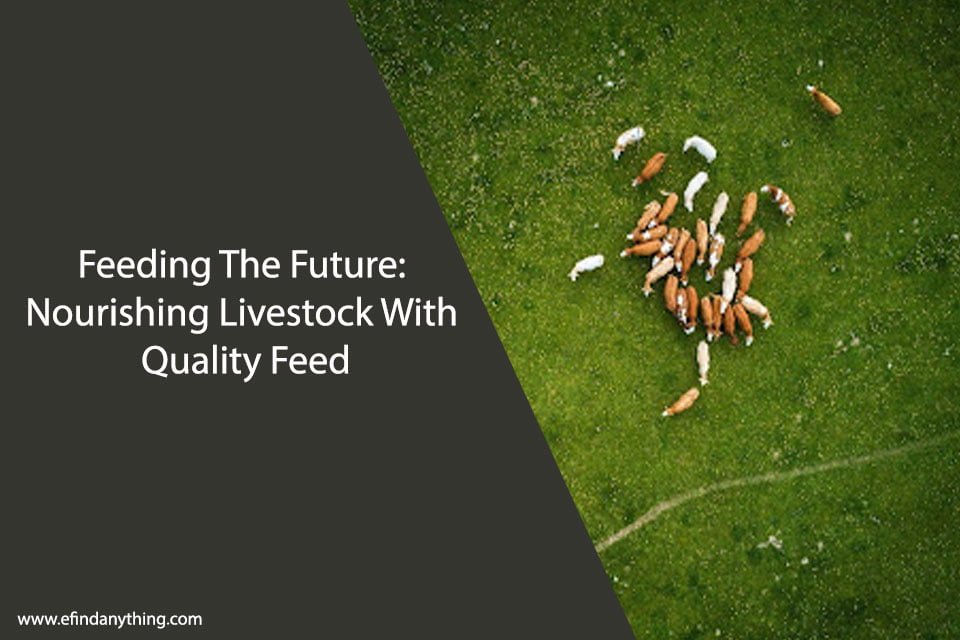
The future of livestock farming relies heavily on the quality of feed provided to animals. This article delves into the importance of nourishing livestock with high-quality feed and explores various aspects related to feed ingredients, diet balancing, advancements in feed technology, and sustainable strategies to meet the increasing demand. By adopting a research-oriented approach, this article aims to provide evidence-based insights into how optimizing animal nutrition can contribute to enhanced livestock health and productivity in the face of growing global challenges.
Table of Contents
The Nutritional Value of Feed Ingredients
The nutritional value of feed ingredients is a crucial factor in determining the overall quality and effectiveness of livestock feed. Evaluating feed efficiency and using proper feed formulation techniques are essential for ensuring that animals receive optimal levels of nutrients to support their growth, reproduction, and overall health. Feed efficiency refers to the ability of animals to convert the nutrients present in their diet into usable energy for various physiological functions. It is influenced by factors such as ingredient composition, digestibility, and nutrient availability. To achieve efficient feed utilization, it is necessary to assess the nutritional composition of individual feed ingredients accurately. This can be done through laboratory analysis or by referring to established nutrient databases. Additionally, modern feed formulation techniques involve mathematical models that consider animal requirements, ingredient characteristics, and cost constraints to create balanced diets that promote optimal performance while minimizing waste or excess nutrient intake.
Balancing Diets for Optimal Livestock Health
To achieve optimal livestock health, it is essential to carefully balance diets. Nutritional supplementation and feed formulation play crucial roles in achieving this balance. Nutritional supplementation involves providing additional nutrients, such as vitamins and minerals, to meet the specific dietary requirements of livestock. This helps to address any deficiencies in the base diet and ensures that all necessary nutrients are provided in adequate amounts. Feed formulation, on the other hand, involves selecting and combining different feed ingredients in appropriate proportions to create a complete and balanced diet for livestock. This process takes into consideration the nutritional content of each ingredient, as well as the specific needs of the animals being fed. By carefully balancing diets through nutritional supplementation and feed formulation, optimal livestock health can be achieved.
Advancements in Feed Technology
Advancements in feed technology have revolutionized the way diets are formulated for optimal livestock health. Smart feeders and automated feeding systems have emerged as key components in modern livestock management. These technological innovations enable precise control over the quantity and quality of feed provided to animals, resulting in improved health, growth, and productivity.
Smart feeders incorporate advanced sensors and algorithms to monitor individual animal behavior and nutritional requirements. By analyzing data such as eating patterns, weight gain, and nutrient intake, these systems can adjust feed composition accordingly. This ensures that each animal receives a balanced diet tailored to its specific needs.
Automated feeding systems further enhance efficiency by automating the distribution of feed throughout the day. They allow for frequent small meals rather than large infrequent ones, mimicking natural grazing behavior. This approach maximizes nutrient absorption while minimizing waste. Overall, advancements in feed technology offer significant benefits to livestock health by optimizing nutrition management through smart feeders and automated feeding systems.
Sustainable Strategies for Meeting Growing Demand
One approach to address the challenge of meeting the growing demand for animal products is through the implementation of sustainable strategies. These strategies focus on utilizing alternative protein sources and improving feed conversion efficiency. By incorporating alternative protein sources, such as insect-based protein or algae, into livestock feed formulations, the reliance on traditional protein sources like soybean meal can be reduced. This not only helps to alleviate pressure on land resources used for soybean cultivation but also diversifies the feed composition, leading to a more balanced nutrient profile for animals. Additionally, improving feed conversion efficiency plays a crucial role in meeting growing demand sustainably. Strategies such as optimizing nutrient utilization and reducing wastage can help minimize the amount of feed required per unit of animal product output. Overall, these sustainable strategies offer promising solutions for nourishing livestock while minimizing environmental impact and resource consumption. To find a feed mill near you, try to search with the keywords feed mill near me on the internet and pick one that is more affordable.





